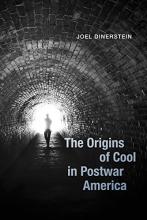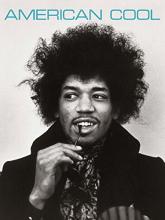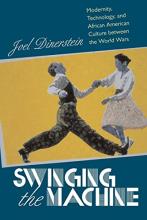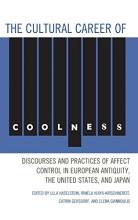Joel Dinerstein
Professor

Areas of Expertise
Biography
Joel Dinerstein is the author of several works on the history of cool, including The Origins of Cool in Postwar America, American Cool, and Coach: A Study of New York Cool. In 2014, he was the co-curator of American Cool at the National Portrait Gallery in Washington, DC, an acclaimed photography and pop-culture exhibit based on his own research. In 2015, he gave a Ted Talk on "Why Cool Matters." He is also the author of an award-winning history of jazz, industrialization, and swing-era youth culture entitled Swinging the Machine: Modernity, Technology, and African-American Culture. He has been a consultant on popular music and jazz for HBO's Boardwalk Empire, the National Endowment for the Humanities (NEH), and Putumayo Records. He has written articles about American identity and popular culture on a range of subjects including Bruce Springsteen, film noir, cyborgs, Jewish-American culture, and race in the NFL. He has published four articles on New Orleans second-line culture as a member of the Prince of Wales Social Aid & Pleasure Club, including "39 Sundays: Second-Line Season," in Rebecca Solnit and Rebecca Snedeker's New Orleans: Unfathomable City. For ten years he was a jazz DJ on WWOZ-FM in New Orleans, the city's jazz and heritage station. He is the former Executive Director of Tulane's Center for the Gulf South, where he was the primary architect of the Center's portal to New Orleans music, Music Rising @ Tulane. Dinerstein has received the Student Body Award for Excellence in Undergraduate Teaching and teaches courses on cool, race and ethnicity, blues, Jewish literature, technology, and contemporary literature. He has a Ph.D. in American Studies from the University of Texas.
Education
University of Texas at Austin
University of Texas at Austin
SUNY Buffalo
Accomplishments
Excellence in Teaching Award for Junior Faculty
2007
Tulane University
Eugene M. Kayden Press Book Award
2004
in recognition of the best book in the humanities published by a university press (for Swinging the Machine)
Award for Excellence
2004
Association for Recorded Sound Collections (ARSC), Best Research in Recorded Jazz, Rhythm & Blues, or Soul
Outstanding Dissertation Award
2001
UT-Austin, Arts & Humanities
Articles
American Cool: W. R. Burnett and the Rise of Literary Noir
WITH MOST SCREENWRITERS, the work lives well after the name is forgotten. So it is with W. R. Burnett, who is all but lost in public memory, and yet the long narrative reach of this screenwriter and forgotten novelist extends to half a dozen key pop-culture tropes, especially cable drama’s dependence on tortured suburban outlaws—Tony Soprano, Walter White, Nancy Botwin. Burnett’s narrative innovations helped shape the arc of a century’s worth of popular culture, starting with his first novel, Little Caesar, a surprise bestseller in 1929 that was adapted into Hollywood’s first gangster film; together with Scarface (Burnett wrote the 1932 screenplay), these two films remain gangster boilerplate. A decade later, he helped create film noir through director John Huston’s adaptation of Burnett’s novel High Sierra and his own screenplay for Graham Greene’s This Gun for Hire. Burnett also has a solid claim to inventing the heist film with 1950’s The Asphalt Jungle, a novel-turned-noir classic (again by Huston) that even had a Blaxploitation remake a generation later, called Cool Breeze. His last screenplay was for The Great Escape, the acclaimed 1963 World War II film that established Steve McQueen as an icon of cool: His character’s nickname was “The Cooler King,” in reference to his ability to maintain his dignity and sanity even in solitary confinement (that is, even in “the cooler”). Five years later, Burnett’s last novel, The Cool Man, was a swan song for his most original contribution to American cool: the existential criminal. This admirable figure was an independent, ethical man within his own code, riveting for his contradictions, and ultimately doomed as someone who, to paraphrase Bob Dylan, lives outside the law because he assumes himself honest.
Media Appearances
What sucking at something teaches us about being cool
Being cool – the antithesis of the suck-at-something ethos – might have a historically very recent and very specific origin. There’s one fascinating theory that the very basis of cool as a bulwark against vulnerability originated from African-American jazz musicians in the thirties and forties. Joel Dinerstein explains in his book The Origins of Cool in Postwar America how “cool” was a survival mechanism against the racism black performers continually confronted. “To play it cool combined performed nonchalance with repressed vulnerability,” he wrote.
How Cool Works in America Today
In his entertaining book “The Origins of Cool in Postwar America,” Tulane historian Joel Dinerstein traces the diverse sources of this style — from the West African concept of “itutu,” which means mystic coolness, to the British stiff upper lip mentality. Jazz musicians, especially people like Lester Young, brought these influences together into what we now call the cool style. Jazz influenced the film noir directors, and then carried cool over to France, where it was embraced by existentialists like Camus.
Cool Is as Cool Was
Are you cool? To answer “yes” means that you fail this quiz, because to be cool means not to care. If you answered “no,” that may mean you’ve gauged your coolness honestly and found it to be nonexistent. Then again, a negative response may indicate that you are actually so cool that you don’t need Joel Dinerstein’s exhaustive yet readable study, a history that balances arguments from such skull-crushing theorists as Simone Weil, Arthur Koestler and Oswald Spengler with portraits of laid-back cats and chicks like Lester Young, Frank Sinatra and Billie Holiday.
New Orleans: The Culture of Resilient Music Arises After Katrina
“What he actually meant was that here—the actual historically-continuous traditions: music, festivals, ritual, second lines—all of that are sort of how the city rebuilt itself after Katrina,” says Joel Dinerstein, a professor at Tulane University and scholar in American pop culture and history.
A New Book Begs the Question: Is Coach Cool?
Coach: A Story of New York Cool, written by Tulane University professor (and course instructor of “The History of Cool”) Joel Dinerstein, is a colorful narrative of Coach’s 75 years in the fashion and leather goods business. This isn’t so much a book about Coach’s products as it is a book about Coach’s Americana and New Yorker bona fides. As Deborah Harry writes in the book’s foreword, the purpose of this book is “seeing New York City through the eyes of Coach.”
Tulane Today Mentions
LimmudFest calls on Tulane faculty for talks on timely topics
Local artists, scholars and cultural leaders examine art’s role in shaping society
Inventor of noir, gangster and heist films is subject of English professor’s latest research
NOLA authors launch books at Tulane
'American Cool' on display in Smithsonian exhibit
Deep thoughts about New Orleans as the 'Unfathomable City'
Donald Harrison Jr. chosen as artist-in-residence
Pop conference to focus on Southern roots
In the News
Reader's Digest: Where Did the Concept of Race Come from, Anyway?
Observer: A new book begs the question: Is Coach cool?
PCDN: New Orleans: The Culture of Resilient Music Arises After Katrina
New York Times: How Cool Works in America Today
MSNBC: MSNBC presents ‘Story of Cool’ executive produced by LL Cool J
Los Angeles Times: Opinion: The pernicious myth of a Caucasian race













